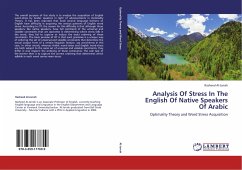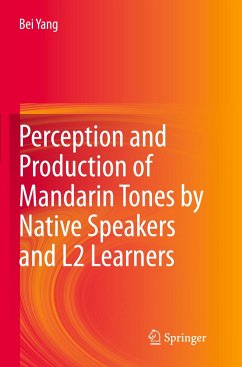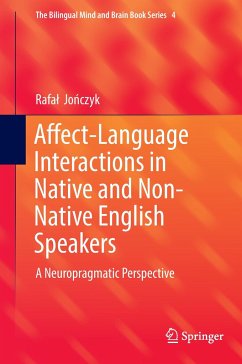![The Acquisition of English Soun[dz] by Native Japanese Speakers The Acquisition of English Soun[dz] by Native Japanese Speakers](https://bilder.buecher.de/produkte/25/25576/25576320z.jpg)
The Acquisition of English Soun[dz] by Native Japanese Speakers
A Perceptual Study
Versandkostenfrei!
Versandfertig in 6-10 Tagen
32,99 €
inkl. MwSt.

PAYBACK Punkte
16 °P sammeln!
Individuals learning a second language may experiencedifficulties in perceiving sounds that are unfamiliarto them. Crucially, some sounds may be problematiceven if they are used in the native language of thelearners. For example, Japanese learners of Englishgenerally experience difficulties in distinguishing aword like rose from roads , even though bothsounds - [d] and [z] - occur in Japanese. Thus, asimple comparison of segment inventories betweenone's first and target language is insufficient topredict the impediments encountered by adult secondlanguage learners. The present study investigat...
Individuals learning a second language may experience
difficulties in perceiving sounds that are unfamiliar
to them. Crucially, some sounds may be problematic
even if they are used in the native language of the
learners. For example, Japanese learners of English
generally experience difficulties in distinguishing a
word like rose from roads , even though both
sounds - [d] and [z] - occur in Japanese. Thus, a
simple comparison of segment inventories between
one's first and target language is insufficient to
predict the impediments encountered by adult second
language learners. The present study investigates
whether a phonological approach that compares
inventories of features rather than segments can
provide a better account of these difficulties. The
results of an experiment evaluating the perception of
16 English sound contrasts by native Japanese
speakers suggest that in addition to featural
differences, the role of phonotactics and acoustic
correlates cannot be ignored. Results of this
research have important implications for theories of
language perception and acquisition, and should be
useful to anyone interested in language processing or
language teaching.
difficulties in perceiving sounds that are unfamiliar
to them. Crucially, some sounds may be problematic
even if they are used in the native language of the
learners. For example, Japanese learners of English
generally experience difficulties in distinguishing a
word like rose from roads , even though both
sounds - [d] and [z] - occur in Japanese. Thus, a
simple comparison of segment inventories between
one's first and target language is insufficient to
predict the impediments encountered by adult second
language learners. The present study investigates
whether a phonological approach that compares
inventories of features rather than segments can
provide a better account of these difficulties. The
results of an experiment evaluating the perception of
16 English sound contrasts by native Japanese
speakers suggest that in addition to featural
differences, the role of phonotactics and acoustic
correlates cannot be ignored. Results of this
research have important implications for theories of
language perception and acquisition, and should be
useful to anyone interested in language processing or
language teaching.












